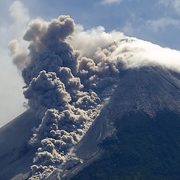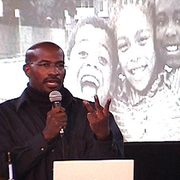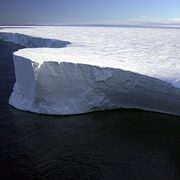-
Two recent Op-eds in two of our nation’s leading papers, the New York Times and the Wall Street Journal, have intensified discussions about geo-engineering as a potential solution to global warming. Fred Ickle and Lowell Wood (subscription required) lambaste all parties involved in developing an international treaty on global warming because they have focused only on mitigation and have intentionally ignored “climate geo-engineering”. Ken Caldeira took a different stance arguing that while we should continue to try to apply regulation with the goal of transitioning to a new, clean energy system, we should also set aside 1% of research funding to large-scale techno-fixes just in case we’re unable to reduce emissions enough to limit the impacts of climate change.
While I agree with Caldeira that we shouldn’t remove these options from the table, it’s important to recognize that every hypothesized solution so far has the potential of creating new problems. Do we really want to solve one problem while creating a catastrophe of a different variety?
Some of the potential solutions I’ve seen include James Lovelock and Chris Ripley’s recent letter to the editor in Nature who advocate for the use of pipes “to increase the mixing of nutrient below the thermocline with the relatively barren waters at the ocean surface.”
Continue by clicking the “read more” link below
-
Dot Earth added to our blogroll.
Andrew Revkin has been reporting on the environment for the New York Times since 1995, and just recently started working on a blog titled Dot Earth.
Dot Earth will be providing information on climate change and sustainability. Revkin explains, “I’ve decided to focus Dot Earth on the broad-brush theme of sustainability for a few reasons. One is that “slow drip” issues are hard to capture and convey through traditional media tools, which are mostly (and appropriately) focused on dramatic events happening now, not eventually momentous trends that hide in plain sight.
Another is that some of the underlying problems related to humanity’s impact on the environment are largely irreversible. The greenhouse effect appears a lot easier to amplify than to reduce. Extinction is forever (at least for now). Such issues deserve sustained attention.
Finally, I just have this innate interest in subtle problems, or solutions, that over time can change the world, for better or worse.”
-
“Try this experiment. Go knock on someone’s door in West Oakland, Watts or Newark and say: ‘We gotta really big problem!’ They say: ‘We do? We do?’ ‘Yeah, we gotta really big problem!’ ‘We do? We do?’ ‘Yeah, we gotta save the polar bears! You may not make it out of this neighborhood alive, but we gotta save the polar bears!’ ”
If this key communication disconnect continues, Jones, a visionary Oakland-based activist, explains, we will never find solutions to either social inequality or environmental destruction. Instead, we need a “green economy strong enough to lift people out of poverty.” Green For All, based out of the Ella Baker Center for Human Rights in Oakland, seeks to bring “green collar” jobs to urban areas. If young people of color start installing solar panels now, explains, Jones, they’ll become managers in five years, owners in ten, and eventually inventors.
The publicity this initiative has been enjoying the past week (New York Times and The Nation) speaks to the revolutionary nature of the program, and a revolution people have been waiting for. Van Jones believes these two movements have been separated for too long, and his passion is contagious. The fight to curb climate change has literally been a fight to maintain the environmental status quo, a conservative approach that turns off many people who do not benefit from the way things are. Van Jones’ environmental revolution provides hope for both sides of the double helix—-hope for a more inclusive, diverse environmental movement, and hope to lift people of color out of poverty.
-
Though the most recent data concerning Arctic sea ice melting has received attention in the media, it is hard for most to grasp what “record melting” means. “Record melting” is difficult to show in one simple figure and to understand in a historical context. In the New York Times, two weeks ago, the Science section put up a great interactive graphic which really demonstrates how quickly the ice is melting. I strongly recommend that you check this feature out.
Continue by clicking the “read more” link below
Categories
- Building and Planning
- Carleton's Wind Turbines
- Climate Change
- Conferences
- Cowling Arboretum
- Ecosystem Management
- Emissions and Offsets
- Energy Sources & Uses
- Environmental Justice
- Events
- Food
- Higher Education
- International News
- National News
- News
- STA Program
- Student Life
- Student Projects
- Sustainability
- Sustainable Planning & Development
- Transportation
- Waste


